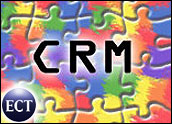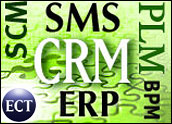
In some ways the buzz about business intelligence analytics, an increasingly common add-on to a smart and established CRM system, resembles the buzz five years or so ago about CRM. Organizations have to exercise caution in choosing BI analytics solutions, a single piece of the amorphous CRM puzzle hawked half a decade ago.
“With the CRM hype of the late ’90s, we were touting everything from real-time to multichannel,” said Sheryl Kingstone, program manager at the Yankee Group. “I think there’s more hype here [with BI], but also it’s only one piece.”
Watch Your Step
Unlike the pie-in-the-sky promises of early CRM packages, the payoffs of BI analytics are simple and concrete: usable information for more efficient and accurate business decisions. The more information a company has when it starts down the path of BI analytics, the easier it is to determine what kind of information it needs to snare in the future to have the biggest impact.
With the first releases of CRM packages, prospective investors just didn’t understand the premise of the technology — and often its marketers and industry analysts didn’t, either — and the systems weren’t flexible enough to help them get up to speed.
And the marketing has not become more clear.
“A lot of what vendors are calling analytics is really just reporting business intelligence, not predictive analysis. You have to be careful. [BI analytics] is very expensive. You have to understand what you’re trying to accomplish,” she said. “Take a look at what the analytics is within each CRM vendor vs. best of breed. What do you need reported? What can you do with each of the CRM suites? Where is the predictive analysis? Get past the hype to what you need to do.”
A Vendor Viewpoint
“You’ll see a lot of variety from vendor to vendor,” said Rob Stephens, director of technology for SAS. “Some people are slapping a BI analytics label on something very different. That presents a challenge to buyers.”
To make the selection process a little simpler, SAS has nurtured a strong solutions focus, meaning it has prepackaged its products with specific services and direction toward specific predictions — for example, customer churn or customer profit.
These analytics models offer a clear best practice that fits the needs of many companies. They can buy the pre-built tailored toolkits rather than customizing their SAS products to answer the concerns muddling their business decisions, said Andy Bober, director of CRM strategy at SAS.
The value of any analysis or analytics comes from its application to specific business problems, “which requires customization, but which can and should be developed around standardized technology building blocks,” saud Chris Selland, vice president of sell-side research at the Aberdeen Group.
Stephens said companies have become savvy about business intelligence and business analytics such that they’re reaping value beyond what they could have realized had they stuck to traditional information sharing and management methods.
“The real key is you have to be able to know the value you got out of implementation,” said Bober. “You know that with the next business challenge you don’t have to start over. You do what you can do to design a data mart or data warehouse, broader corporate goals about how to add value to the organization and what people need in their jobs to be more efficient at using information.”
Learning To Share
According to Kingstone’s research, many companies have made it past the hype. In her interviews with 500 sales and marketing executives on analytics, data warehouses and marketing automation, she found that 26 percent of respondents said that BI analytics improved their companies’ efficiency and 14 percent said that the investment produced the biggest bang for their buck.
Other sources say that some 50 percent of BI analytics projects either fail outright or never get embraced by the organizations that adopt them. Kingstone and her research refuted that. “There’s not a lot of failure,” she said. “There’s a lot of disillusionment.”
Not every company implementing BI analytics has developed an enterprise data warehouse. Many apply the solution only to a department or line of business within their companies, yielding less accurate results. “They’re looking at individual [line of business] sales performance, individual marketing performance, individual customer satisfaction performance, and that’s fine,” she said. But the long-range goal is understanding how the company’s aggregate data relates to each line of business and helps each make better business decisions.
Build Incrementally
“The greatest benefits from CRM can be gained when marketing, customer service and sales are looking at and acting upon shared analytics, but many companies still keep their data stovepiped within departments, which dramatically reduces the impact and devalues the return of BI,” said the Aberdeen Group’s Selland. “Companies are learning that CRM applications and analytics will have more impact and more value when deployed across the enterprise.”
Still, Stephens of SAS said companies often don’t want to wait the three years it will take for them to build an enterprise data warehouse and hate to let a smart solution like BI analytics pass them by in the meantime.
“BI must be enterprise-wide, or it’s not BI, it’s just departmental analytics,” he continued. “Having said that, it is extremely risky and difficult to do a big-bang implementation. What companies need to do is move incrementally. Start small and expand. But make sure that investments are made toward the goal of unifying customer analytics.
“BI can provide value to all levels of the organization,” he concluded, “but of course the value is greatest where knowledge, rather than just raw data, is most needed.”















































